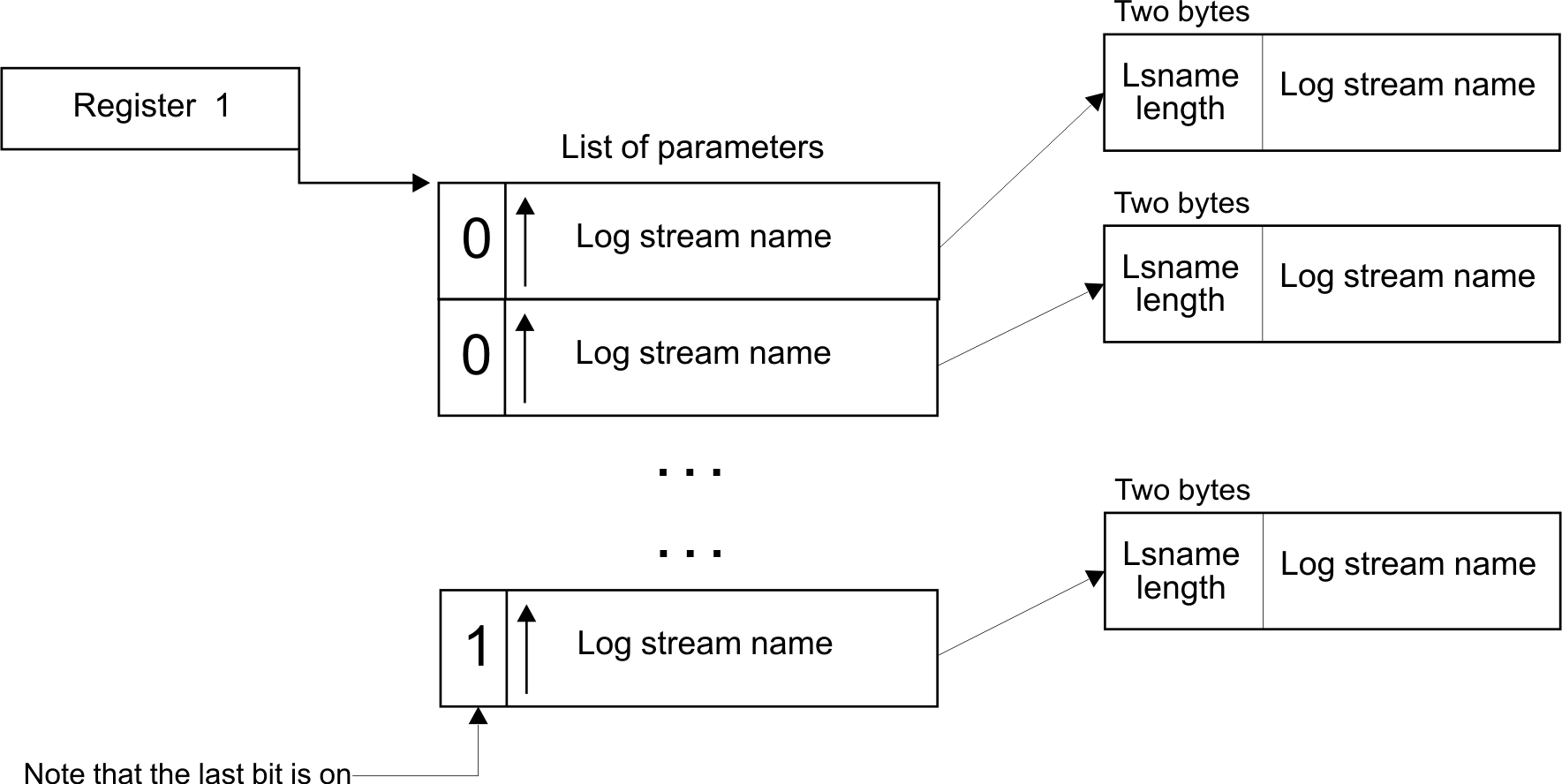 z/OS MVS Installation Exits
z/OS MVS Installation Exits
 z/OS MVS Installation Exits
z/OS MVS Installation Exits
|
Previous topic |
Next topic |
Contents |
Contact z/OS |
Library |
PDF
IEFU29L — SMF Log Stream Dump Exit z/OS MVS Installation Exits SA23-1381-00 |
|
|
Topics for This Exit Appear as Follows:
The SMF dump exit IEFU29L allows you to initiate the archiving of SMF data from a log stream. IEFU29L is invoked using the SWITCH SMF command. Note that you can use the system logger to manage how long you retain the SMF log stream data and to automatically offload the log stream data to VSAM linear DASD data sets, so you might not need to use IEFU29L to drive the archiving of the SMF log stream data. See "Managing Log Data: How Much? For How Long?"in z/OS MVS Setting Up a Sysplex. Use IEFU29L to perform the following tasks:
Defining the Exit in SMFPRMxxTo allow the system to invoke IEFU29L, define the exit in the SMF parmlib member (SMFPRMxx). Specify IEFU29L on the EXITS option of the SUBSYS parameter for the STC subsystem. If your installation chooses not to define a SUBSYS parameter for STC, you can specify IEFU29L on the EXITS option of the SYS parameter. For more information about coding the EXITS option, see the description of SMFPRMxx in z/OS MVS Initialization and Tuning Reference. Controlling the Exit Routine Through the Dynamic Exits FacilityIBM® has defined the IEFU29L installation exit to the dynamic exits facility. You can refer to the exit by the name SYS.IEFU29L or SYSyyy.IEFU29L. See the description of the SMFPRMxx parmlib member in z/OS MVS Initialization and Tuning Reference for an explanation of the naming conventions for SMF exit routines. You can use the EXIT statement of the PROGxx parmlib member, the SETPROG EXIT operator command, or the CSVDYNEX macro to control this exit and its exit routines. To define IEFU29L to the dynamic exits facility, you must specify the exit in both PROGxx and SMFPRMxx. The system does not call the exit if it is defined in PROGxx only. If you do not plan to use the dynamic exits facility for this exit, you only need to define IEFU29L in SMFPRMxx. If you do not associate any exit routines with exit IEFU29L in PROGxx, by default, the system uses the exit routine name that matches the exit name (IEFU29L). If you associate exit routines with this exit in PROGxx, the system does not use the default exit routine. If you need the default exit routine, you should explicitly add it to PROGxx. You can use the ADDABENDNUM
and ABENDCONSEC parameters on the CSVDYNEX REQUEST=ADD macro or the
ABENDNUM parameter of the SETPROG EXIT operator command to limit the
number of times that the exit routine abnormally ends before it becomes
inactive. An abend is counted when both of the following conditions
exist:
Exit Routine EnvironmentIEFU29L
receives control in the following environment:
Exit RecoveryIBM suggests that you set up an ESTAEX recovery routine to handle errors that might occur during the execution of IEFU29L. An ESTAE-type recovery routine is set up by the module that calls IEFU29L; if the recovery routine gets control, it will prevent SMF from ending when the exit routine ends abnormally. Whether the exit routine continues to be invoked depends on the abend processing of the dynamic exits facility. Exit Routine ProcessingThe SMF dump exit receives control from the SMF writer when the SWITCH SMF command is issued to dump data from an SMF log stream. Programming ConsiderationsIEFU29L must be reenterable and refreshable because PLPA pages are stolen. That is, they can be paged in but not paged out, and subsequent page-ins overlay any code changes. Note: IEFU29L runs in the SMF address
space that runs under the MSTR subsystem rather than JES. Therefore,
jobs submitted to the internal reader from IEFU29L will run under
MSTR rather than JES. To have a job run under JES, you must request
that the job run on JES rather than the MSTR subsystem. For more
information about submitting a job request to an internal reader,
see z/OS MVS Using the Subsystem Interface.
Macro Instructions and Restrictions: IEFU29L can issue the WTOR macro (for example, to request the operator to start the dump program). When you issue the WTOR macro, specify LONG=YES on the WAIT macro. IEFU29L cannot use the SMFWTM or SMFEWTM macro to write records to the SMF log stream. Entry SpecificationsSMF passes to IEFU29L a parameter list mapped by IEFU29LM, which contains the name of the log stream. Registers at Entry: The contents of the registers on entry to the exit are as follows.
Parameter Descriptions: When IEFU29L
is driven, control block IEFU29LM will receive Register 1, which points
to the following address. Figure 1 shows
an example of input parameter structure.
Figure 1. IEFU29L Input Parameter Structure
 Return SpecificationsNo return information is expected. Registers at Exit: Upon return from the exit processing, the register contents must be as follows.
 Coded Example of the Exit RoutineA sample IEFU29L exit is provided in SYS1.SAMPLIB in member IEEU29. The sample exit consists of an Assembler stub that calls a REXX program, passing the names of the log streams as parameters. The sample REXX program returns the log stream names to the console and can be modified as necessary.  


|
 Copyright IBM Corporation 1990, 2014 Copyright IBM Corporation 1990, 2014 |